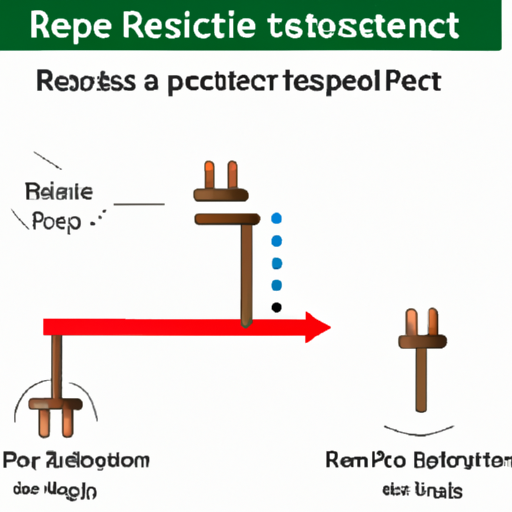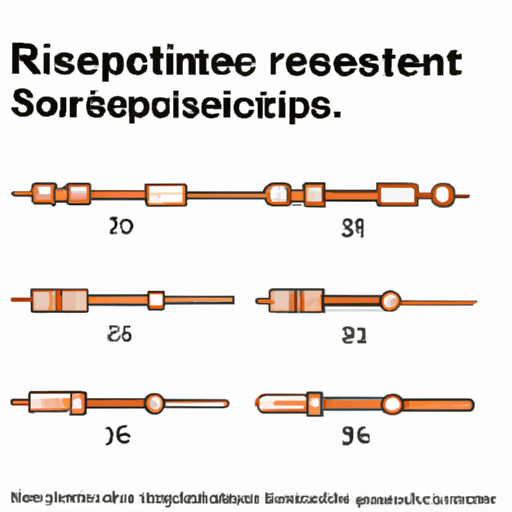What is the market prospect of resistor 3?
What is the Market Prospect of Resistor 3?
I. Introduction
In the world of electronics, resistors play a crucial role in controlling the flow of electric current. Among the various types of resistors, Resistor 3 has emerged as a significant component due to its unique features and applications. This blog post aims to explore the market prospects of Resistor 3, delving into its technical specifications, applications, market analysis, influencing factors, challenges, and future outlook.
II. Understanding Resistor 3
A. Technical Specifications
Resistor 3 encompasses a range of resistor types, including fixed, variable, and specialty resistors. Each type serves a specific purpose in electronic circuits. Fixed resistors maintain a constant resistance, while variable resistors allow for adjustable resistance levels, making them versatile for various applications. Specialty resistors, on the other hand, are designed for specific functions, such as high precision or high power handling.
Key features of Resistor 3 include high reliability, temperature stability, and compact size, which are essential for modern electronic devices. These characteristics make Resistor 3 suitable for applications requiring precise control of electrical signals.
B. Applications of Resistor 3
Resistor 3 finds applications across multiple industries:
1. **Consumer Electronics**: In devices such as smartphones, tablets, and laptops, Resistor 3 is used to manage power distribution and signal processing, ensuring optimal performance and energy efficiency.
2. **Automotive Industry**: With the rise of electric vehicles and advanced driver-assistance systems (ADAS), Resistor 3 plays a vital role in managing electrical systems, enhancing safety features, and improving overall vehicle performance.
3. **Industrial Applications**: In manufacturing and automation, Resistor 3 is utilized in control systems, sensors, and robotics, contributing to increased efficiency and reliability in industrial processes.
4. **Telecommunications**: As the demand for high-speed data transmission grows, Resistor 3 is essential in telecommunications equipment, helping to maintain signal integrity and reduce noise.
C. Comparison with Other Resistor Types
When compared to other resistor types, Resistor 3 stands out due to its adaptability and performance. While traditional resistors may suffice for basic applications, Resistor 3 offers enhanced features that cater to the evolving needs of modern electronics. Its ability to handle higher frequencies and temperatures makes it a preferred choice in demanding environments.
III. Market Analysis
A. Current Market Trends
The global electronics sector is experiencing significant growth, driven by advancements in technology and increasing consumer demand. This growth is reflected in the rising demand for Resistor 3, as manufacturers seek components that can enhance the performance and efficiency of their products. Additionally, the trend towards miniaturization in electronics has led to a greater need for compact and reliable resistors.
B. Key Players in the Resistor Market
The resistor market is characterized by the presence of several key players, including established manufacturers and emerging suppliers. Major companies such as Vishay Intertechnology, Yageo Corporation, and Panasonic dominate the market, holding substantial market shares. These companies invest heavily in research and development to innovate and improve their product offerings, ensuring they remain competitive in a rapidly evolving market.
C. Regional Market Insights
The market for Resistor 3 varies across different regions:
1. **North America**: The region is witnessing robust growth due to the presence of leading electronics manufacturers and a strong focus on research and development.
2. **Europe**: With stringent regulations on electronic components and a growing emphasis on sustainability, the European market is adapting to incorporate more efficient and environmentally friendly resistors.
3. **Asia-Pacific**: This region is the largest market for resistors, driven by the booming electronics manufacturing industry in countries like China, Japan, and South Korea.
4. **Latin America**: The market is gradually expanding, with increasing investments in technology and infrastructure.
5. **Middle East and Africa**: Although still emerging, the market is expected to grow as more industries adopt advanced technologies.
IV. Factors Influencing Market Growth
A. Technological Advancements
Technological innovations are a significant driver of market growth for Resistor 3. Advances in materials science have led to the development of resistors that can withstand higher temperatures and offer better performance. Additionally, the rise of the Internet of Things (IoT) and smart devices has created a demand for more sophisticated resistors that can integrate seamlessly into these technologies.
B. Regulatory Environment
The regulatory landscape plays a crucial role in shaping the resistor market. Compliance with industry standards and certifications is essential for manufacturers to ensure product quality and safety. Furthermore, environmental considerations, such as the push for lead-free components, are influencing the design and production of resistors.
C. Economic Factors
Global supply chain dynamics and trade policies significantly impact the resistor market. Fluctuations in raw material prices can affect production costs, leading to price volatility in the market. Manufacturers must navigate these challenges to maintain profitability while meeting customer demands.
V. Challenges in the Resistor 3 Market
Despite the promising market prospects, several challenges could hinder the growth of Resistor 3:
A. Competition from Alternative Technologies
As technology evolves, alternative solutions such as digital signal processing and integrated circuits may pose competition to traditional resistors. Manufacturers must continuously innovate to stay relevant in a changing landscape.
B. Supply Chain Disruptions
Recent global events have highlighted vulnerabilities in supply chains, leading to delays and increased costs. Manufacturers of Resistor 3 must develop strategies to mitigate these risks and ensure a steady supply of components.
C. Price Volatility of Raw Materials
The prices of raw materials used in resistor production can fluctuate due to various factors, including geopolitical tensions and natural disasters. This volatility can impact production costs and, ultimately, the pricing of Resistor 3.
VI. Future Outlook
A. Projected Market Growth Rates
The market for Resistor 3 is expected to witness steady growth in the coming years, driven by the increasing demand for electronic devices and advancements in technology. Analysts project a compound annual growth rate (CAGR) of around 5-7% over the next five years.
B. Emerging Trends and Opportunities
Several trends present opportunities for growth in the Resistor 3 market:
1. **Customization and Specialty Resistors**: As industries seek tailored solutions, the demand for custom resistors designed for specific applications is on the rise.
2. **Integration with Smart Technologies**: The proliferation of smart devices and IoT applications will drive the need for advanced resistors that can support these technologies.
C. Strategic Recommendations for Stakeholders
To capitalize on the growing market, stakeholders should focus on innovation, invest in research and development, and explore partnerships with technology companies. Additionally, adopting sustainable practices and ensuring compliance with regulatory standards will be crucial for long-term success.
VII. Conclusion
In summary, the market prospects for Resistor 3 are promising, driven by technological advancements, increasing demand across various industries, and a focus on efficiency and miniaturization. While challenges exist, the opportunities for growth and innovation are significant. Industry participants and investors should remain vigilant and proactive in navigating this dynamic market landscape.
VIII. References
1. Market Research Reports on Resistors
2. Industry Journals and Articles on Electronics
3. Company Reports from Major Resistor Manufacturers
4. Regulatory Standards and Guidelines for Electronic Components
This blog post provides a comprehensive overview of the market prospects for Resistor 3, highlighting its importance in the electronics industry and the factors influencing its growth. As technology continues to evolve, Resistor 3 is poised to play a vital role in shaping the future of electronic devices.







